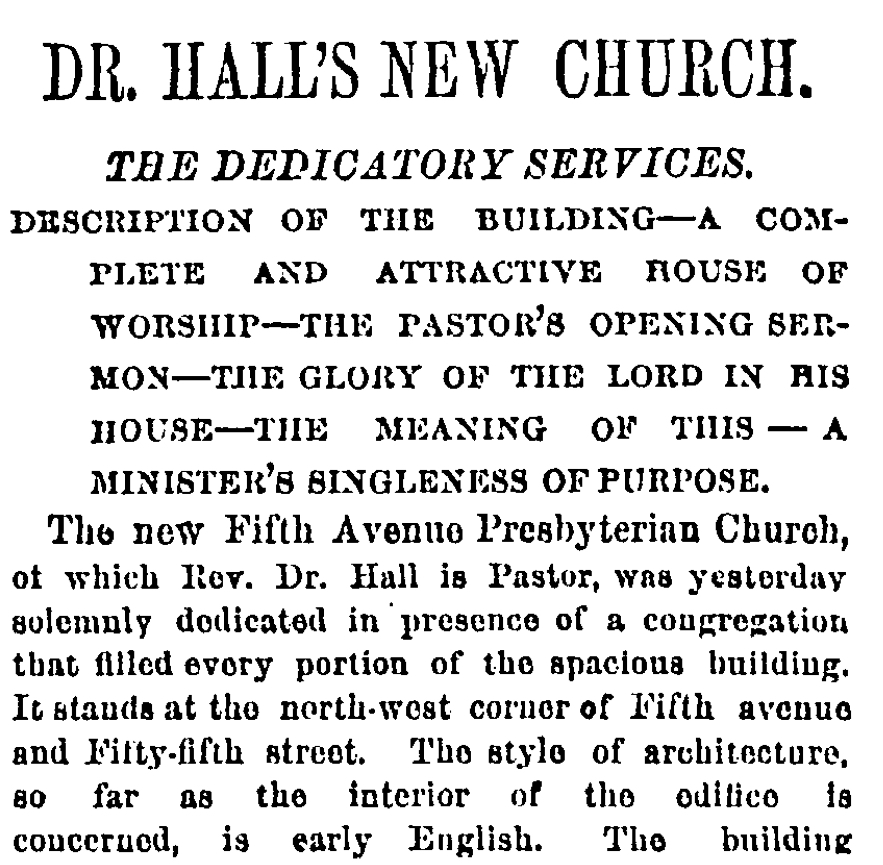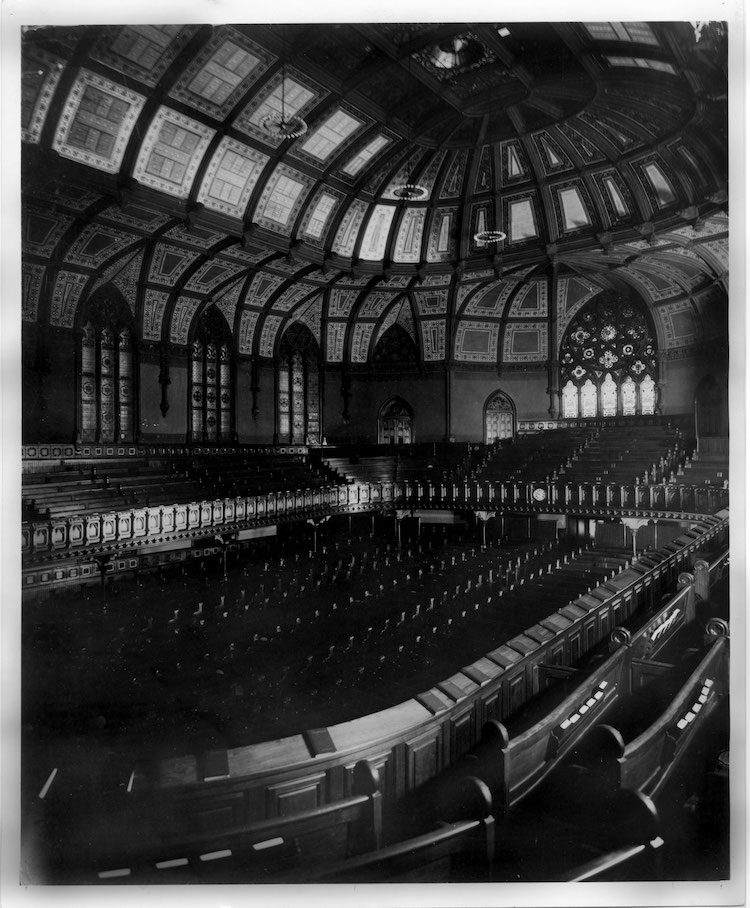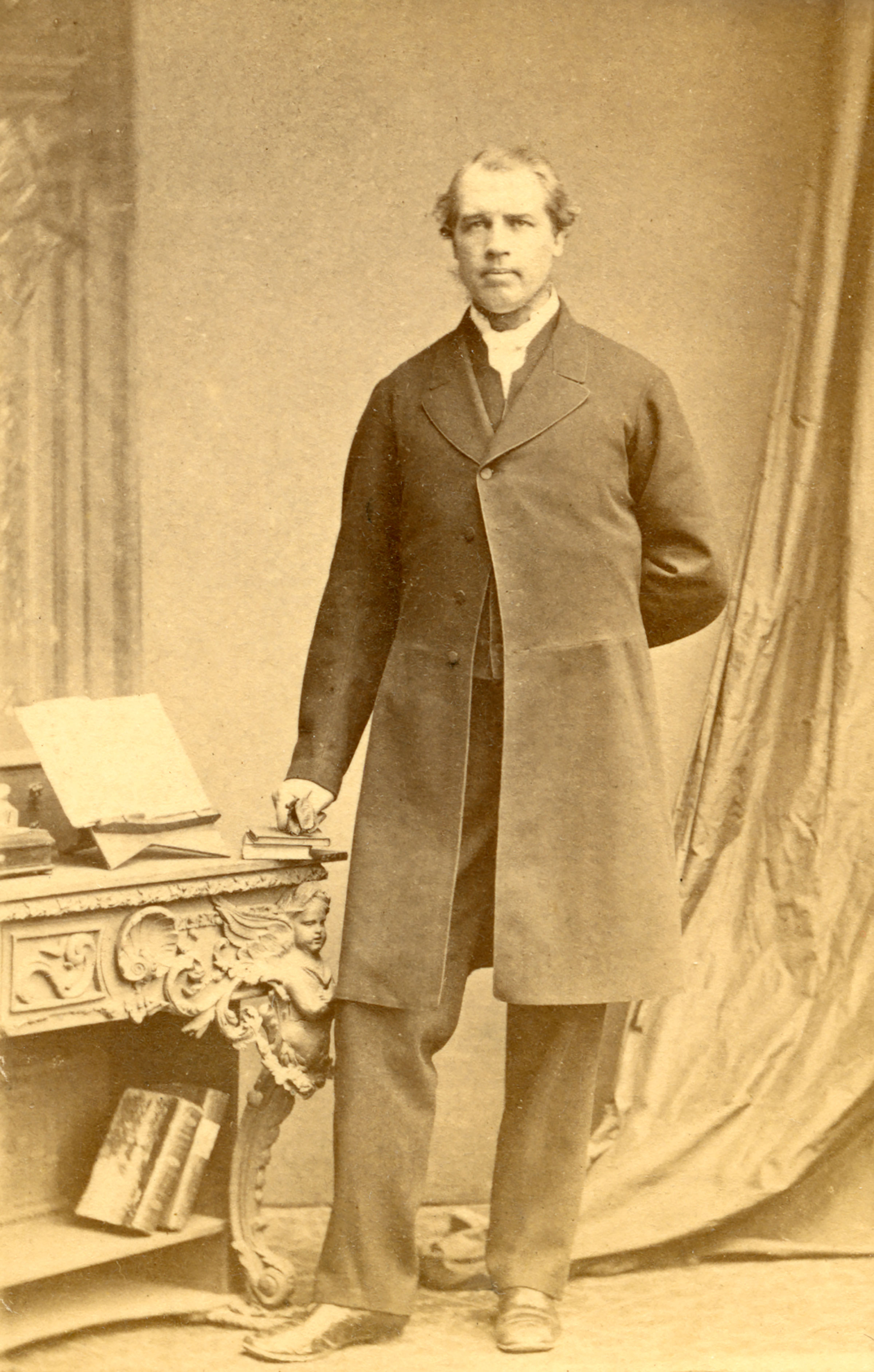History · May 9, 2020
May 9, 1875: Dedicating Our New Church
The Sanctuary of Fifth Avenue Presbyterian Church is 145 years old today.
The congregation, led by our dynamic young pastor, the Rev. Dr. John Hall, hosted a dedication service to celebrate our new home.
The grand, Victorian Gothic church became our fourth house of worship since the congregation was founded in lower Manhattan in 1808. It was widely known at the time as “Dr. Hall’s Church,” and later as “the cathedral church of Presbyterianism.”
The morning after the dedication, the New York Times reported on the church and the spectacle:
The dedication services were set down for 11 o’clock, but an hour earlier large crowds were in waiting round the principal entrances, while others sought admission at the private doors. In a little while the portion of Fifth avenue in the vicinity of the church was crowded with carriages. As soon as the doors were opened, both the regular congregation and visitors poured into the church, and very soon every seat was occupied.
To mark this 145th anniversary, we share excerpts from the Times’ reporting below. To download and read the complete article from the Times’ archives, click here.

The Architecture
The new Fifth Avenue Presbyterian Church, of which Rev. Dr. Hall is Pastor, was yesterday solemnly dedicated in presence of a congregation that filled every portion of the spacious building. It stands at the north-west corner of Fifth avenue and Fifth-fifth street. The style of architecture, so far as the interior of the edifice is concerned, is early English.
An elliptical form has been preserved in the construction of the auditorium, which has seating capacity for about 2.000 persons. The arrangements as to ventilation and acoustic properties are excellent, and the minister’s desk may be seen from any part of the building.
The lighting is effected by forty-nine traceried windows. Twenty-four of these are over the galleries, twenty-four smaller ones under them, and there is besides a large window at the east end.
The air with which the church is ventilated is drawn down through the tower by an iron fan seven feet in diameter. The fan runs at a rate of 220 revolutions a minute, and this speed gives a delivering capacity of 30,000 cubic feet of air at the same time. By means of this apparatus a volume of air can be thrown into the church which renews the atmosphere in some fifteen minutes.
The cellar of the church is applied altogether to purposes of heating and ventilation. Nine thousand feet of steam-pipes form a net-work on the ceiling of the cellar, and the air is made to pass over them to warm the building. Cold air is forced into the building at an altitude of fifty feet above the auditorium.

Dr. Hall’s Sermon
The exercises were exceedinlgy simple. Rev. Dr. Hall offered prayer, and then the hymn “Before Jehovah’s awful throne” was sung. The effect of so many voice singing in perfect unison was very fine.
Dr. Hall next made the customary announcements, after which he invited his hearers to a consideration of the First Book of Kings, viii., 11. “The glory of the Lord had filled the house of the Lord.”
What was meant by the glory of the Lord? The cloud that was visible to the senses of the Hebrews was not Jehovah, but it indicated His presence. It meant that he was not there by His natural presence merely, but that He was there for a purpose, to dwell in the midst of them.
When we look for God’s glory to fill His House, we look for souls there. Jesus Christ came down among us. He spoke men’s language; He bore their burdens; He wore their sorrows; to the weakness of man He united the omnipotence of the Almighty, thus giving the highest and most complete testimony of God’s infinite good will to man, and of his clemency and tenderness.
When we know this, know this God in Christ, in the highest sense is his house filled with God’s glory. No ceremonies could so indicate it. Not pealing organs, not long flowing processions, not all such things put together could so indicate the presence of God’s glory as the living, loving, believe soul in relation to the Almighty.
